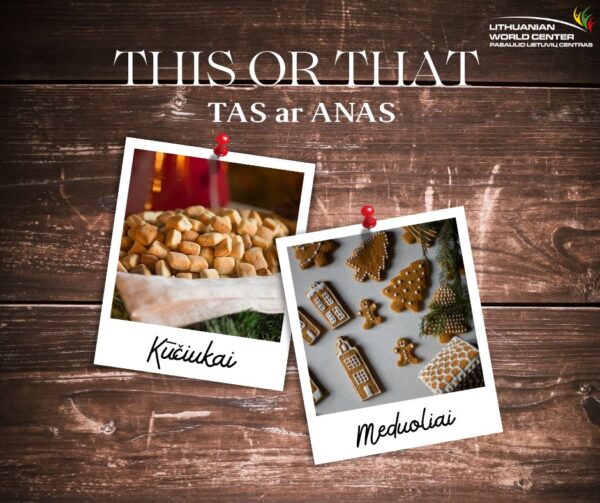
December 22, 2022
SPOTLIGHT ON LITHUANIAN CULTURE! CHAPTER 12: Christmas Cookies

Kūčiukai
“Kūčiukai“ (also known as “prėskutė“ or “šližikai“) is a traditional Lithuanian Christmas Eve dinner dish. Kūčiukai are as important as bread itself, which has been revered by Lithuanians since ancient times. Kūčiukai have an old symbolic meaning, dating back to pagan times: in ancient times, a loaf of bread was offered to one’s ancestors during the winter solstice. Later, this offering of bread was replaced with the tradition of kūčiukai, which are eaten by Lithuanians during Christmas Eve dinner and also “eaten” by the departed souls of their ancestors overnight. It is no wonder that kūčiukai are called “the bread of ghosts“ and “the bread of the Last Supper.“ They are also a symbol of love!
And here’s the recipe for kūčiukai
Gingerbread
In the old days, gingerbread was not a luxury food, it was baked by housewives of poorer families. It didn’t need to be decorated and could last a long time. Housewives would bake a big bowl of gingerbread, set it on top of a cupboard, cover it…and let it sit until Christmas. The custom of baking gingerbread originally came to Europe from Egypt. In Lithuania, no St. Casimir’s fair is complete without gingerbread. It turns out that gingerbread has been sold in Lithuanian markets for about 400 years. Thinner, prettier pastries were later baked on estates, where sugar was already available and there was no need to use beet syrup. In ancient times, women used to try to add as many spices as possible, up to nine. These could include ginger, nutmeg, cloves, cinnamon, allspice, allspice, and lemon peel. The spices made the gingerbread particularly fragrant and tasty.
Here is a delicious gingerbread recipe. Enjoy!